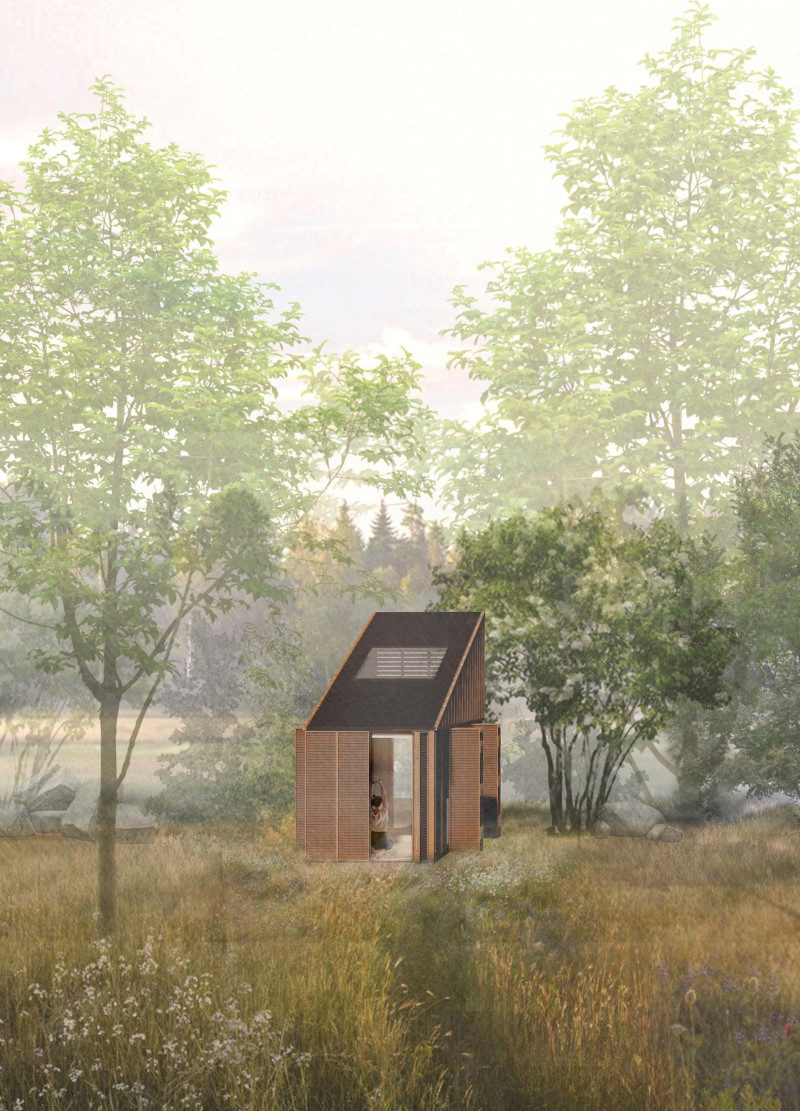5 key facts about this project
The Tiny Kiwi Meditation Cabin is located along the northern edge of Waikato, New Zealand, surrounded by native trees. Designed as a space for mindfulness and reflection, the cabin invites individuals to connect with nature. The main idea behind the design is to promote regeneration and tranquility, creating a place where people can retreat from everyday life and focus on their well-being.
Modular Configuration
The design of the cabin features a modular structure, composed of three equal sections that enhance both its usability and visual interest. The main volume is split horizontally into an upper and lower part, creating distinct areas while maintaining a unified appearance. The upper portion is then divided diagonally, resulting in a tapered roof that aligns with the site's natural landscape. These careful design choices lead to a balanced spatial experience while emphasizing simplicity.
Materiality and Structure
Timber plays a significant role in the construction of the cabin, chosen for its environmental appropriateness and natural beauty. Horizontal timber cladding is layered with vertical timber battens, producing a textured exterior that complements the surrounding environment. The building method is designed to have a low impact on the landscape while ensuring durability. This selection of materials enhances the visual appeal of the cabin and strengthens its connection to the natural world.
Interior Layout and Functionality
Inside, the cabin's layout accommodates different forms of meditation and relaxation. Each meditation area can host two people, while a central entry core serves as a communal space for instructors or small groups. Operable timber shutters allow users to adjust light and views, giving them control over their environment. The tapered roof's north-facing skylight brings in natural light, enhancing the interior space throughout the day.
Environmental Integration
The design of the Tiny Kiwi Meditation Cabin carefully considers airflow and ventilation. Louvres along the cabin’s high face support effective air circulation, improving comfort for those inside. Glazed sections are placed thoughtfully to provide views of the outside landscape, reinforcing the connection between the interior space and the natural environment. This attention to detail highlights the role of nature in the experience of mindfulness and healing.
With its thoughtful arrangement of shapes and materials, the cabin creates an atmosphere that encourages meditation and quiet reflection, all while respecting the surrounding landscape.






















































